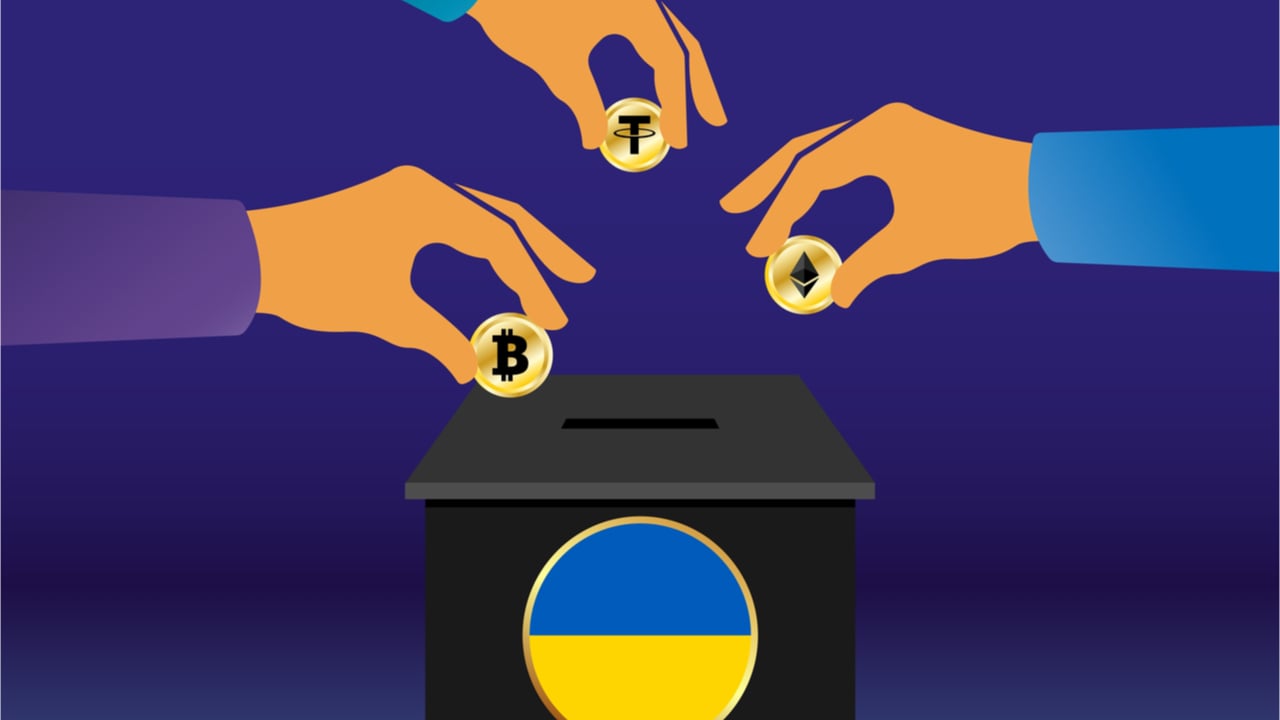
Gavin Wood is stepping down from his position as CEO of Parity, the development firm behind interoperable blockchain Polkadot (DOT). In a new company blog post, Polkadot co-creator Gavin Wood says he’s leaving his position to spend more time on making blockchain technology more relevant to the public. “It therefore means more time to focus […]
The post Polkadot (DOT) Co-Founder Gavin Wood Steps Down As Parity CEO To Focus on Strategies for Mass Crypto Adoption appeared first on The Daily Hodl.

Gavin Wood said that he seeks to transform the Polkadot blockchain into a full technocracy.
Live from Polkadot Decoded in Buenos Aires on Wednesday, Polkadot (DOT) and Kusama founder Gavin Wood announced that the blockchain's governance model would undergo a new transformation. Dubbed Gov2, anyone would be able to start a referendum at any time for as many times as they wish in the new setup, similar to initiating new transactions on the blockchain.
Thereafter, pending referenda need 50% of the vote from stakeholders within 28 days' time for approval or face rejection by default. Participants can also intervene and launch timely cancellation proposals, which require similar voting procedures, in the event that technical glitches are discovered within the referenda, themselves. Passive voters, t can specify a different delegate for every class of referendum in the system in a process known as multirole delegation.
Wood said there will be a new body, dubbed the Polkadot Fellowship, composed of technical experts who have the power to shorten referenda voting times in the event of time-sensitive matters. Overall, several tenets would remain invariant from the previous governance model. First, 50% of the total stake in the system will be allowed to command the system's future. Greater weight will also be given to those willing to lock their tokens in the system for a longer durationin a process known as conviction voting. Finally, a committee will also remain to oversee the blockchain's technocratic developments.
As told by Gavin, the changes will reflect the flaws of centralization and one referendum at a time voting system present in Polkadot's original governance model. Gov2 is set to launch on Kusama imminently, following afinal professional audit of its code. Once tested on Kusama, a proposal will be made to bridge it to Polkadot.
 Crypto payment processor Coingate and International Business Settlement (IBS) have started an arrangement with the National Bank of Ukraine (NBU) that enables well-wishers to send donations to Ukraine via more than 70 different crypto assets. Calls for Widening List of Accepted Crypto Donations Lithuania-based crypto payment processor Coingate recently said it has begun an arrangement […]
Crypto payment processor Coingate and International Business Settlement (IBS) have started an arrangement with the National Bank of Ukraine (NBU) that enables well-wishers to send donations to Ukraine via more than 70 different crypto assets. Calls for Widening List of Accepted Crypto Donations Lithuania-based crypto payment processor Coingate recently said it has begun an arrangement […]
A pioneer in the world of blockchain is giving his 2022 prognosis for an altcoin which has had a breakout year both in terms of price and project milestones. In a new blog post, Ethereum co-founder Gavin Wood discusses the future of cross-chain interoperability protocol Polkadot (DOT), which he founded in 2016. “More than any […]
The post Here’s What To Expect From This $29,000,000,000-Market Cap Altcoin in 2022, According to Ethereum Co-Founder appeared first on The Daily Hodl.

Polkadot (DOT) price crashed both times its futures open interest clipped $1 billion. Should traders expect a correction now that open interest is over this figure?
Whenever there is relevant growth in the number of derivatives contracts currently in play (open interest), it usually means that more traders are involved.
In futures markets, longs and shorts are balanced at all times, but having a larger number of active contracts allows the participation of institutional investors who require a minimum market size.
However, in Polkadot's (DOT) case, price crashes have often been anticipated by this indicator breaking the $1 billion mark.

The April 17 crash happened after DOT reached its $48.30 all-time high, which led to a $1.2 billion futures open interest. Over the following week, the altcoin dropped 45% to $26.60, driving the number of active contracts to a $600 million equivalent.
Three weeks later, on May 15, a similar movement happened as Polkadot renewed its all-time high to $49.80. This time around, a 68% crash followed over the next five days. Consequently, the futures open interest reached a 4-month low at $220 million.

Take notice of how Polkadot's 28% rally in the first two days of November led to a $53.30 record high and also brought the derivatives indicator above the $1 billion mark.
The 18.9 million DOT development fund announced on Oct. 17 accentuated the rally already in place ahead of the parachain auctions expected for mid-November. According to Polkadot's founder Gavin Wood, the $960 million grant will be used to build, improve and educate the network's growing ecosystem.
Projects are currently raising capital to bootstrap their parachain auctions and Polkadot investors who wish to support any of those must lock their DOT into a sponsored account. In return, investors are rewarded with air-dropped tokens from the project competing for the parachain slot.
Does the current $1 billion "death mark" on Polkadot futures open interest signal a potential crash or will it be different this time?
As previously explained, the open interest metric can not be deemed bullish or bearish on a standalone basis. So, to understand if derivatives traders are using excessive leverage, one should analyze the perpetual futures contract data.
This instrument is the retail traders' preferred derivative because its price tends to track the regular spot markets.
To balance out their risk, exchanges will charge a funding rate to whichever side demands more leverage and this fee is paid to the opposing side.

Neutral markets tend to display a 0% to 0.03% positive funding rate, equivalent to 0.6% per week, indicating that longs are the ones paying it. The average rate ahead of the May 15 crash was a bit higher at 0.075%, which is roughly 1.6% per week. At this time, longs were not desperate to close their positions and there were no signs of excessive leverage.
Related: Is Polkadot eyeing $100 next? DOT price jumps 25%, triggering aclassic bullish chart pattern
The only possible conclusion is that a generalized market crash caused investors and algo traders to desperately sell their altcoins, and thus derivatives markets were not the leading cause for the crash.
Another comforting piece of data for Polkadot holders is DOT’s current 8-hour funding rate at 0.05%. This is slightly optimistic and nowhere near levels that are considered concerning. At the moment, there are no signs of a potential crash due to the $1 billion futures open interest.
The views and opinions expressed here are solely those of the author and do not necessarily reflect the views of Cointelegraph. Every investment and trading move involves risk. You should conduct your own research when making a decision.

Polkadot’s Gavin Wood has announced a more than $770 million development fund just weeks before the network’s parachain auctions are set to go live.
Polkadot (DOT) founder Gavin Wood has unveiled a $777 million development fund ahead of the network’s parachain lease auctions.
Wood tweeted on Oct. 17 that Polkadot’s treasury has allocated more than 18.9 million DOT (worth roughly $777 million at the time of writing) to a development fund that will be disbursed through community governance.
Wood gave broad suggestions as to how the funds might be spent, stating the capital will be mobilized to realize the community’s vision for “building, improving, educating” Polkadot’s ecosystem, in addition to “anything else that the Polkadot governance believes valuable.
According to Polkadot’s Wiki, the treasury funds can be spent if approved by the council, which votes on proposals put forward to them. The Polkadot council currently consists of 13 members, however the council plans to expand to 24 seats at some stage in the future.
With many Polkadot governance votes seeing poor community participation in the past, the development fund may be intended to bolster DOT holders’ engagement with the governance process According to Polkassembly, three governance proposals put forward this past week have seen total voter turnouts of zero, six and seven votes respectively.
Stakeholders wishing to put forward a proposal must reserve a deposit of at least 5% of the proposed spend, with the deposit being either slashed (a burn mechanism to deter validator misbehavior) if rejected, or returned if accepted. With funds being placed at risk in the event of an unsuccessful vote, Polkadot’s slashing mechanism may be a factor impeding governance engagement on the network.
The new development fund was also revealed just weeks before Polkadot’s highly anticipated parachain auctions are scheduled to begin in early November, suggesting the funds could be intended to kickstart development targetingPolkadot’s forthcoming parachain ecosystem.
Polkadot’s parachain auctions will be used to realize Polkadot’s vision for a sharded ecosystem. The auctions will see projects building on Polkadot compete to secure one of the 100 parachain slots by bidding to lock up DOT.
Parachains are Polkadot’s sharded side-chains that can host decentralized applications and protocols, offer specialized computation, and communicate with Polkadot’s proof-of-stake “Relay Chain” to finalize transactions.
Polkadot’s existing relay chain exclusively processes transfers, governance, staking services for the Polkadot network, with the forthcoming parchains being tasked with providing advanced features like smart contract functionality and cross-chain compatibility.
As such, the new development fund may be intended to encourage developers to begin building on Polkadot in preparation of parachains going live.
Related: Polkadot eyes breakout to $75 after DOT price rally sets up classic bullish reversal
Many onlookers have singled out the Coinbase-backed Acala Network as a frontrunner to win the first parchain slot on Polkadot. Karura Network, Acala’s deployment on Polkadot’s siser-network Kusama, won the first parachain auction on Kusama by a significant margin in June.
Karara pulled support from more than 15,000 entities to win its slot with a bid more than 500,000 KSM (worth roughly $184 million at the time of writing).

The first series of auctions will begin on Nov 11 and run until Dec. 9
Polkadot (DOT) has laid out a schedule to debut parachain auctions on Nov. 11 following unanimous approval from the blockchain’s on-chain governance council members. The news marks a landmark achievement as it fulfills the final core technical element of the whitepaper published five years ago.
Parachains are uniquely distinctive layer-1 blockchain platforms that operate laterally alongside the main Polkadot network, in addition to being tethered to the Polkadot Relay Chain. Their purposeful function can be witnessed across a multitude of areas from decentralized finance to smart contracts.
Speaking at the Sub0 Conference as representatives of Parity Technologies, Polkadot founders Gavin Wood and Robert Habermeier confirmed that Polkadot now holds the technical capabilities to implement parachains, auctions and crowdloans for the first time.
In an immediate response, Proposal #118 was motioned by governance member Joe Petrowski, expressing details and recommendations for the deployment.
The first Polkadot parachain auction of the initial batch is slated to begin on Nov. 11 and will continue at a rate of one per week for five consecutive weeks until the final auction on Dec. 9.
The initial bidding period will last for two days, followed by a five-day ending period. Two unique features about the proposal of this auction schedule are that unlike the immediacy of Kusama’s project onboarding after auctions, Polkadot auctions will be held in transit for a period of one month.
In addition to this, there will be a 75% capacity of projects to that witnessed on Kusuma, in a bid for quality over quantity.
Within the proposal, and indeed further quoted later in this piece, canary network Kusama were cited as having a positive impact on the evolution of this concept in both abstract and practical terms.
Kusama, a sandbox platform designed for developers to experiment with blockchain applications before their official launch on the Polkadot blockchain, has recently implemented the success of 11 parachain slot auctions.
In addition to commending the near-flawless process of the Kusama auctions, the official report also noted that 2.4 million KSM has been contributed by 49,000 uniquely active addresses during the auctions.
Cointelegraph reached out to Peter Mauric, Head of Public Affairs at Parity Technologies, for an exclusive commentary on the inspiration behind the proposal as well as the potential impact the implementation may have on the Polkadot ecosystem:
"Kusama was launched in order to give the teams building the core Polkadot protocol, parachains and their constituent communities an opportunity to battle-test their tech and teams. While there were a few bits of expected chaos along the way, the experience over the past few months deploying parachains on Kusama have given us confidence that they are ready for prime time on Polkadot."
Related: Polkadot Web3 wallet Talisman closes $2.35M seed funding round
He went on to discuss the positive impacts that the implementation will have on the Polkadot ecosystem, saying:
"This is the moment everyone has been waiting for since the Polkadot paper was introduced over five years ago. The promise of parachains has always been core to what Polkadot aims to achieve: scalable, customizable and truly decentralized infrastructure for the next generation of layer-1 protocols, in the form of these parachain networks.
 Although it’s possible to draw comparisons between almost any two blockchain development platforms, comparing Ethereum with Polkadot is almost an inevitability. Not only on the technical level – they use a comparable architecture and proof-of-stake consensus to achieve scalability – but because Vitalik Buterin and Dr. Gavin Wood also have a shared history in Ethereum. […]
Although it’s possible to draw comparisons between almost any two blockchain development platforms, comparing Ethereum with Polkadot is almost an inevitability. Not only on the technical level – they use a comparable architecture and proof-of-stake consensus to achieve scalability – but because Vitalik Buterin and Dr. Gavin Wood also have a shared history in Ethereum. […]